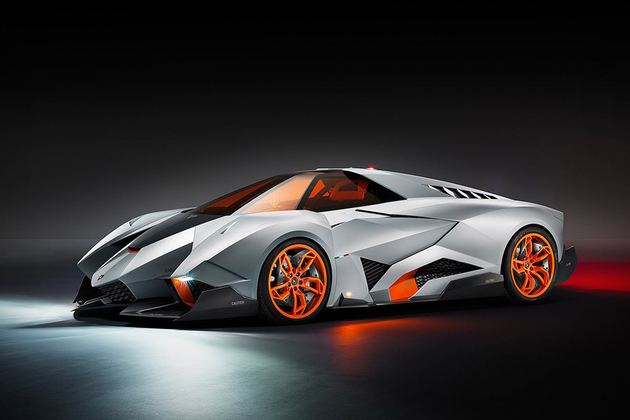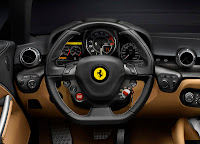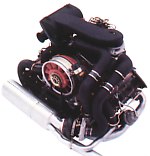The Bugatti Veyron's 16-cylinder monster engine produces 1,001
horsepower for a top speed of more than 250 mph. And it's a passenger
car. Check out the Bugatti.
Creating the Engine
Bugatti did two things to create a compact engine capable of
producing 1,000 hp. The first and most obvious thing is
turbocharging. If you have read
How
Turbochargers Work, you know that one easy way to make an engine
more powerful without making the engine bigger is to stuff more air
into the cylinders on each intake stroke. Turbochargers do that. A
turbo pressurizes the air coming into the cylinder so the cylinder
can hold more air. If you stuff twice as much air in each cylinder, you can burn
twice as much gasoline. In reality, it's not quite a perfect ratio
like that, but you get the idea. The Bugatti uses a maximum turbo
boost of 18 PSI to double the output power of its engine. Therefore, turbocharging allows Bugatti to cut the size of the
engine from 16 liters back down to a more manageable
8
liters.
****To generate that much air pressure, the Bugatti requires
four
separate turbochargers arranged around the engine.
The second thing Bugatti engineers did, both to keep the RPM
redline high and to lower lag time when you press the accelerator,
was to double the number of cylinders. The Bugatti has a very rare
16-cylinder engine.
There are two easy ways to create a 16-cylinder engine.
The latter technique is, in fact, the way Bugatti created its
first 16-cylinder cars in the early 20th century.
For the Veyron, Bugatti chose a much more challenging path.
Essentially, Bugatti merged two V-8 engines onto one another, and
then let both of them share the same crankshaft. This configuration
creates the
W-16 engine found in the Veyron. The two
V's create a W. You can see exactly how this looks in a set of
beautiful videos available on the
Bugatti
Web site (
click
here for instructions on how to access the videos).
Then, Bugatti started piling on features to make the engine even
better...












